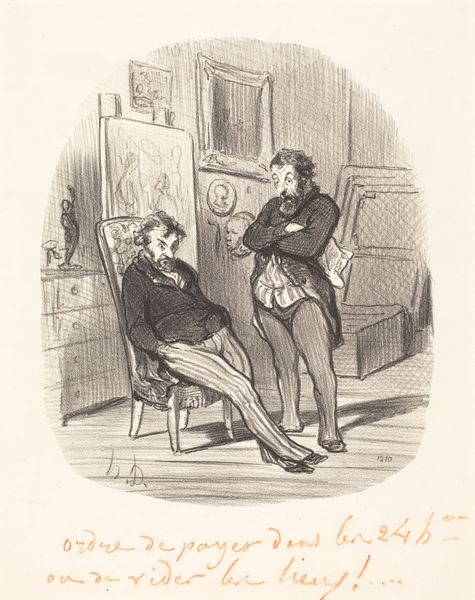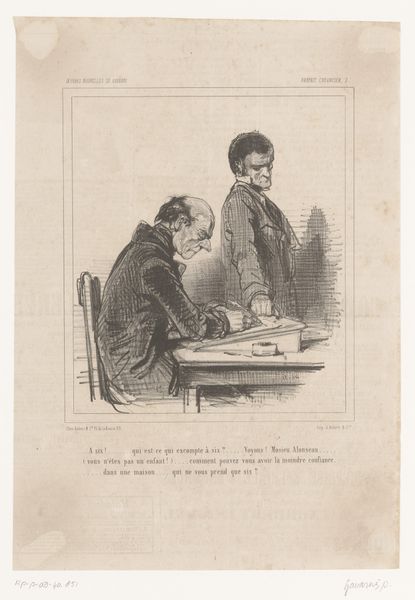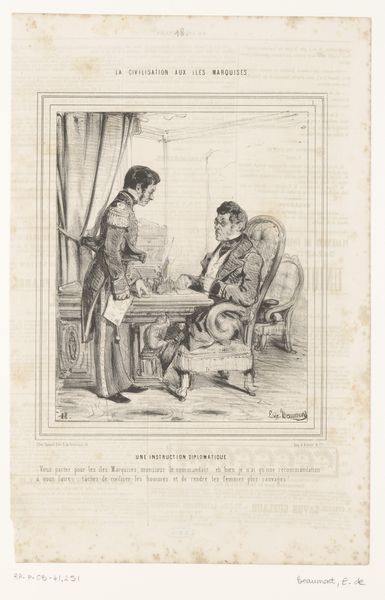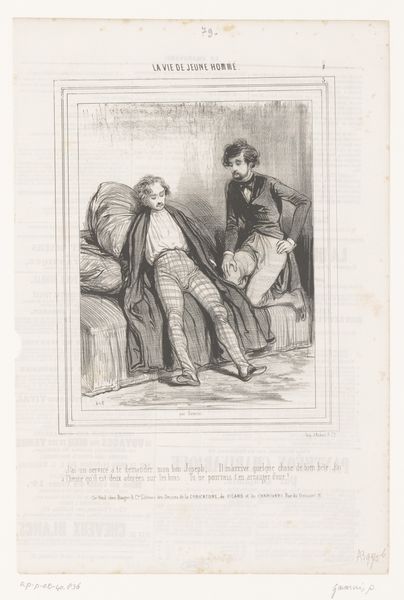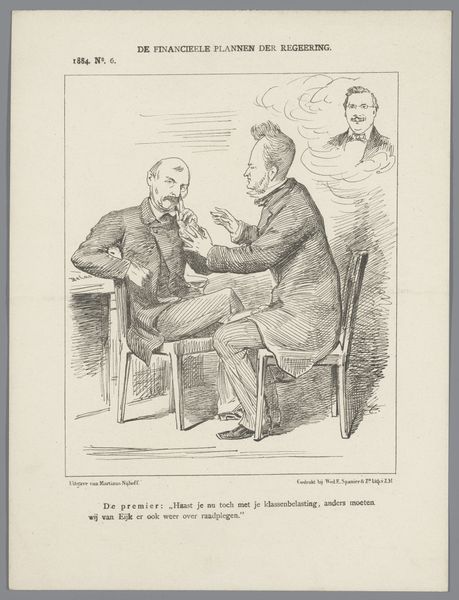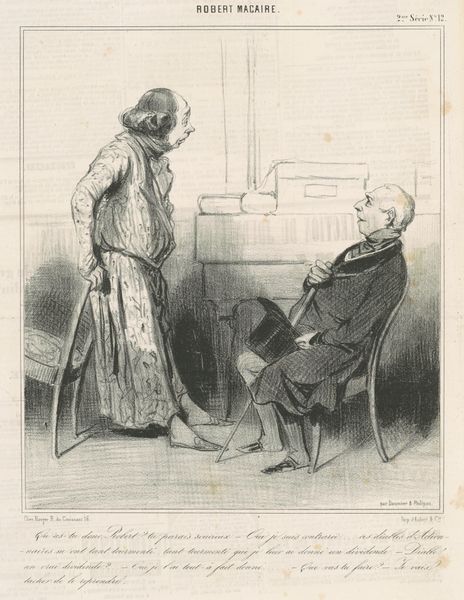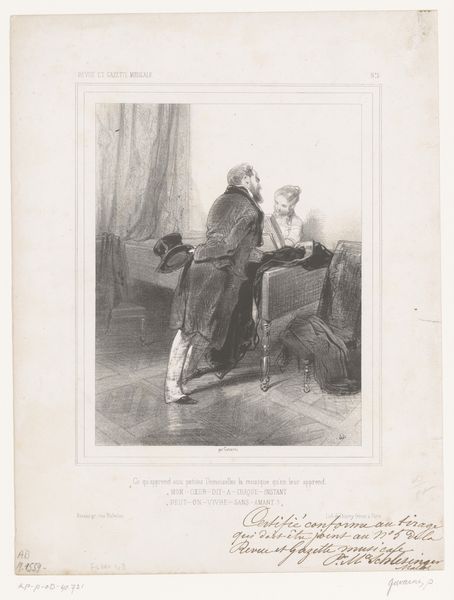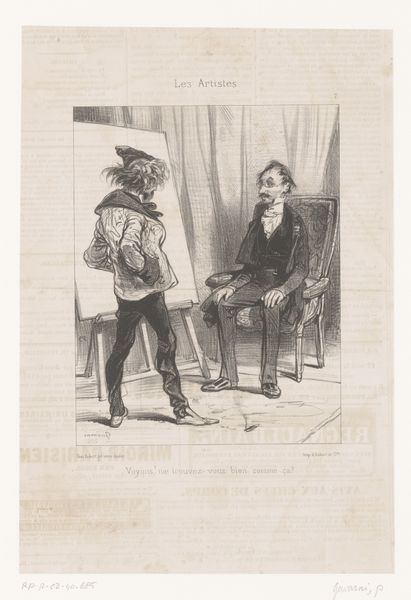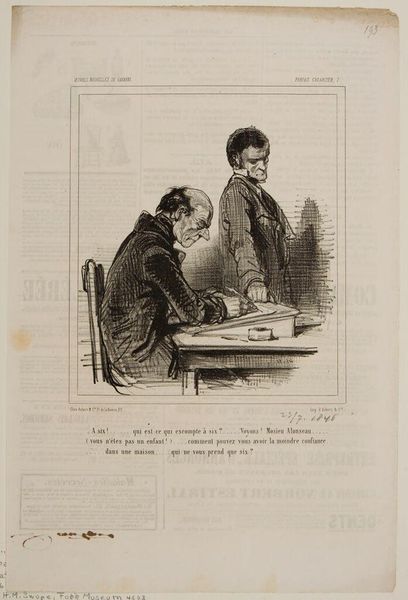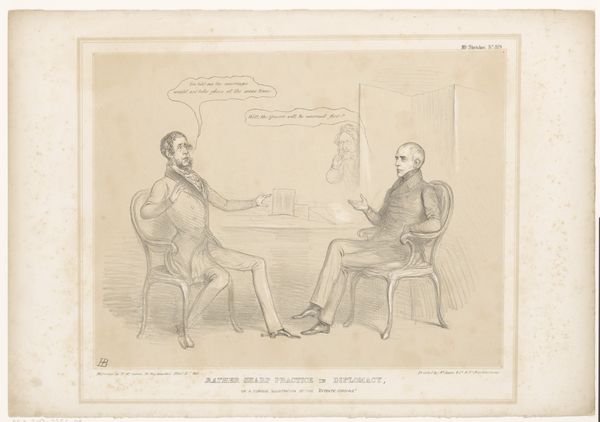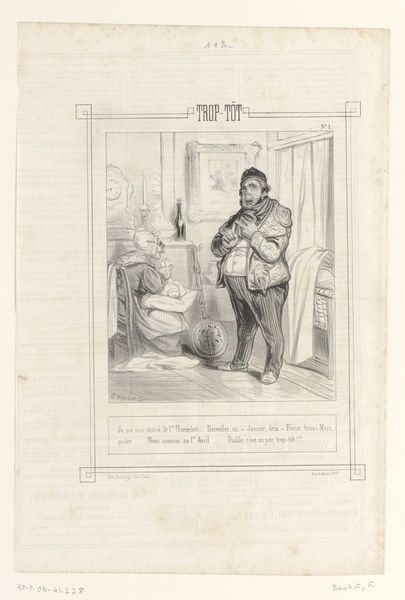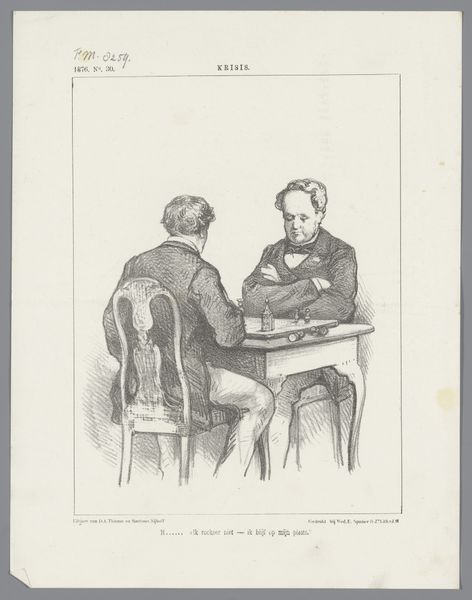
drawing, graphic-art, lithograph, print
#
portrait
#
drawing
#
graphic-art
#
imaginative character sketch
#
lithograph
# print
#
caricature
#
romanticism
#
genre-painting
Dimensions: height 305 mm, width 209 mm
Copyright: Rijks Museum: Open Domain
Curator: Looking at "Schilder wekt zijn in slaap gevallen model," a lithograph by Paul Gavarni dating back to 1838, presently held in the Rijksmuseum, I find myself intrigued by the complexities it unveils. Editor: Immediately, I'm struck by the weariness conveyed here. There's a sense of languor hanging in the air, almost as if time itself is reluctant to move forward. Curator: Indeed. Considering its creation within the Romanticism period, this piece serves as a commentary on the artist's struggle, maybe a socio-political statement on the exhausting nature of artistic creation under societal pressures. Notice how the roles are subverted; the artist looks equally, if not more, weary than the model. It challenges the power dynamics inherent in the artist-model relationship, hinting at a shared exhaustion under a demanding system. Editor: Yes, the artist appears burdened, his slumped posture echoing a wider cultural fatigue. It's interesting how Gavarni utilizes shadow and line to imbue symbolic meaning; the artist’s dark suit, as opposed to the model's light patterned robe, may suggest a professional responsibility versus a temporary one. Is this perhaps about a sacrifice made by artists to stay afloat in the market of representation? Curator: That’s a pertinent question. The print being part of the series "Les Artistes" underscores a collective experience. This suggests Gavarni critiques not just individual plight but a systemic issue within the artistic community. There’s the artist struggling not only with creative fulfillment but, as you pointed out, professional demands—the model falling asleep symbolizing the perceived lack of interest from a world too busy to care about art’s real value. Editor: The image serves as a mirror, then, reflecting anxieties and uncertainties that are deeply woven into artistic life and the symbols connected to it, which is both unsettling and timelessly relatable. Thank you, it makes one consider the layers beneath a seemingly simple studio scene.
Comments
No comments
Be the first to comment and join the conversation on the ultimate creative platform.
